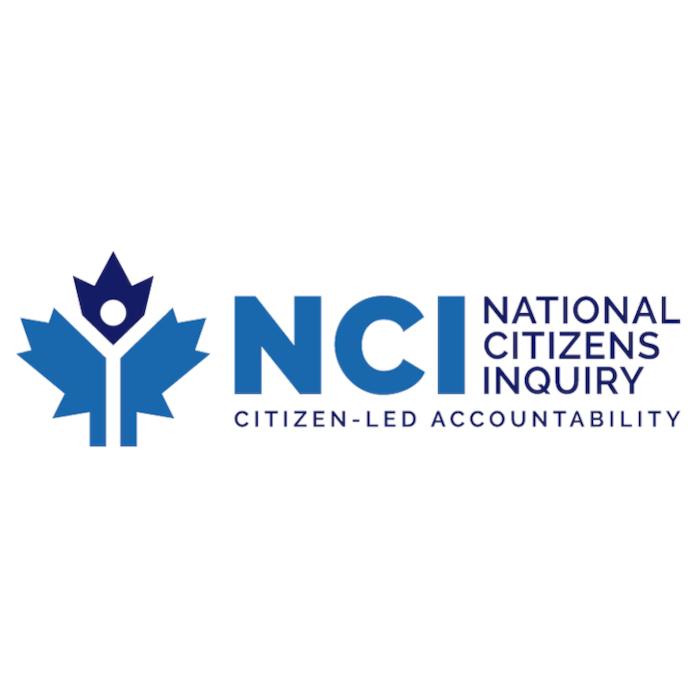Mr. Mitchell has worked as a paramedic since 2009, 5 years of which he was an advanced care paramedic. He testifies in detail about his experience in the field during the pandemic, how the amount of calls differed from what was being reported in the media, and all of the cases that he was seeing with patients that all had the mRNA vaccine in common, and how all of the common concerns of the front line workers were being collectively disregarded by senior health care administrators and officials. Due to the vaccine mandates, he was terminated from his career employment as a paramedic.
* The above video is being streamed via Rumble. Check back often as we continue to update the complete list of links to all witness testimonies in both video and audio/podcast formats.
[00:00:00]
Shawn Buckley
I’d like to introduce our next witness, Mr. Sean Mitchell. Sean, can I get you to state your full name for the record, spelling your first and last name?
Sean Mitchell
My name is Sean Mitchell. S-E-A-N M-I-T-C-H-E-L-L.
Shawn Buckley
And do you promise to tell the truth, the whole truth, and nothing but the truth?
Sean Mitchell
I do.
Shawn Buckley
Now, my understanding is that from 2009 to 2022, you were a paramedic.
Sean Mitchell
That’s correct.
Shawn Buckley
And for the years 2016 to 2022, you were an advanced care paramedic.
Sean Mitchell
I believe that was 2017 to 2022.
Shawn Buckley
Thank you. Now, when the COVID pandemic hit us back in February of 2020, what was your mindset at that time?
Sean Mitchell
In late 2019, early 2020, my mindset— We were told in late 2019 about an atypical pneumonia. We were getting emails from our management about that, didn’t really think much of it. Into 2020, January, world news was starting to report about a possible outbreak in China. So there was some fears and concerns as it progressed through into February and March. So yeah, once March hit and there was a declared pandemic, there was definitely some concern. There was a lot of confusion. But yeah, early on in 2020, it was concern and confusion.
Shawn Buckley
Did your opinion change, and if so, when?
Sean Mitchell
My opinion did start to change a little bit as time progressed. Once there was more and more information out there about what we were dealing with—and what we were actually dealing with—I kind of started to relax and not be so concerned about the severity of the virus that we were dealing with. We’d seen call volumes drop off drastically in early 2020.
Shawn Buckley
So just hang on a second, because my understanding is that Canada was suffering from a severe COVID-19 pandemic in early 2020. You’re telling us your first responder call rate was dropping?
Sean Mitchell
Yeah, that was my experience and that was confirmed by our management.
Shawn Buckley
Can you give us some numbers and kind of flesh that out for us a little more?
Sean Mitchell
So as far as call volume, numbers-wise— On a personal level, I think it’s important to preface, I worked in the region of Durham. I was at the time a part-time paramedic. I was around bases from Newcastle to West to Pickering and all the way up to Beaverton. So a large demographic and population densities were varying.
On a typical shift prior to the pandemic, I would expect to have four, five, six calls to service—depending on which station—all the way up to eight or ten calls for service where we’d actually see a patient. During the early months of the pandemic—March, April, May, June—it was more like two, three calls for service some shifts.
Shawn Buckley
Can I just stop you there? I mean, that’s literally down two-thirds.
Sean Mitchell
My experience was, early on, we just weren’t getting as many calls for service.
Shawn Buckley
So in the spring of 2020, when Canadians are told that we’re in an absolute crisis and that our hospitals are full—“Don’t go to the hospital”—your call volume has dropped by two-thirds.
Sean Mitchell
On a personal level during— Yeah, certain days, we would see a fraction of the calls that we would be used to seeing during a typical cold and flu season.
Shawn Buckley
And how long did that last?
Sean Mitchell
I would say it was very noticeable early on in the pandemic because that was your typical higher volume calls—typical cold and flu season. My experience was kind of—October to March, end of March, early April. So early on it was very distinct, but the lower call volumes lasted up until the following cold and flu season.
[00:05:00]
Shawn Buckley
Okay. So the flu season, which some people call low vitamin D season, basically starts in the fall—October, November—and runs to the spring. Was it any different in 2020 than in previous years?
Sean Mitchell
In 2020, yeah, it was— Like I had said earlier, call volume was less than 2019. Seemed less than 2018. We were spending a lot more time at the ambulance stations and not as much time stuck in the hospitals and responding to calls.
Shawn Buckley
Okay, so the media was telling us that our hospitals were full. What was your experience?
Sean Mitchell
Early on in the pandemic, the same time period—March, April, May, June, right till 2021—I experienced very little offload delay compared to the year previous and compared to the year 2021. Our wait times to get our patients offloaded onto a bed were a lot less. The hospitals didn’t appear as busy in the ambulance areas where we’d wait to be triaged and wait to offload our patients. Nor did they seem to be as busy in the waiting area where the public would access the hospitals.
Shawn Buckley
If I can ask you a direct question: Have you ever seen the hospitals as empty as they were in the spring of 2020?
Sean Mitchell
In the Emergency Department—that’s specifically what we see—no, not in my career.
Shawn Buckley
Okay, so in your career—and you started in 2009—you had never seen the emergency rooms as empty as you saw them in the spring of 2020.
Sean Mitchell
I had never seen so few patients seeking medical care as I did in 2020. That’s correct.
Shawn Buckley
Now, you indicated that you work for the Region of Durham. And you have provided to the NCI a document called “Comprehensive Master Plan for Paramedic Services, Region of Durham,” titled August 13th, 2001. And that document in its entirety will be made available to the commissioners.
David, I’m just going to put a document on my screen I’m hoping we can pull up. I’m pulling up from that document. As I say, the full document would be Exhibit TO-1. But this is page 25 that I’m pulling up from here. And when we look at this what my understanding is: This basically shows ambulance use. So this is basically numbers of calls. Is that correct?
Sean Mitchell
It just says, “Demand by Year.” So it’s a percentage increase of calls.
Shawn Buckley
Right. Now, if we look at year 2020 and we go down to the bottom, where it says “Annual % of Change,” so 2020: that’s the year where we’re in the COVID pandemic. We don’t have any vaccine to protect us. We have the least natural immunity because as people get infected, we get more natural immunity. The average daily demand went down 0.7 per cent.
Sean Mitchell
That’s correct.
Shawn Buckley
And that’s in line with what you experienced. You saw a drop in demand.
Sean Mitchell
I did see a drop in demand.
Shawn Buckley
And now, if we move over to the next line, it’s average annual change and the average from 2016 to 2019. So the average annual change, the average is an increase of 4.7 per cent.
Sean Mitchell
Yes.
Shawn Buckley
There’s not an increase, according to this, between 2019 and 2020. There’s actually a decrease. But it might be more significant than minus 0.07 per cent because we would anticipate, with population growth and the like, for there to be an increase of 4.7 per cent.
Sean Mitchell
As shown in the years prior.
Shawn Buckley
Now, I want to pull up another document. Can you tell us what this document is?
[00:10:00]
Sean Mitchell
This is just a standard communication from the chief of our paramedic service.
Shawn Buckley
This is basically your boss and the person that communicates what’s happening to the paramedics.
Sean Mitchell
Yeah.
Shawn Buckley
And this is a letter sent out to all of the paramedics, so you get a copy of it.
Sean Mitchell
That’s right, it’s an email.
Shawn Buckley
It’s dated March 20th, 2020, and you would have received it on that date.
Sean Mitchell
That’s right.
Shawn Buckley
And it starts: “Thank you all for working through another challenging week. Luckily, call volumes continue to remain down, but I know that won’t last forever.” So basically, your boss is saying something that confirms what you’re telling us, is that in the spring, in this case March, call volumes are down.
Sean Mitchell
Yes.
Shawn Buckley
And commissioners, this forms part of the official record as Exhibit TO-1jj [listed on the NCI website as Exhibit TO-1a].
Now my understanding is that, in 2020, your department was actually supposed to receive an additional ambulance.
Sean Mitchell
We were supposed to receive additional staffing in, I think, the second quarter of 2020, yeah.
Shawn Buckley
And did you receive that?
Sean Mitchell
No, we received another email similar to the last one, saying that they were going to defer adding the additional staffing because of low call volumes.
Shawn Buckley
So just so that we understand, your department was slotted to get an additional ambulance because of anticipated demand and that is put off in the spring of 2020 because demand was so low?
Sean Mitchell
That was what the email said, yeah. And that’s my understanding. It was deferred until a later time.
Shawn Buckley
Now, I didn’t live in the Durham region, but I expect the media would have reported that ambulance use is down and so it’s being deferred; they’re not getting their new ambulance. Is that what you were hearing in the media in the spring of 2020?
Sean Mitchell
That is not what was stated in the media at all. I had actually asked my management staff to be transparent with the public and report, to try to ease anxiety within the public. And that conversation just didn’t go anywhere. So no, the media wasn’t reporting on any of this.
Shawn Buckley
How was the media reporting at that time?
Sean Mitchell
At that time—I’m going to just class that “early pandemic”—it was fear.
Like I said, we were able to spend more time in our ambulance stations than we would normally. Most ambulance stations seemed to have CP24 on loop, and it was just total fear mongering. Like, it was telling something that I wasn’t seeing in reality and my co-workers weren’t really seeing. I think there was a lot of unknowns at that point. But what the media was saying and what reality on the road as a paramedic and a healthcare provider—it just wasn’t lining up. It wasn’t the same.
Shawn Buckley
Right. You told us earlier that basically, the call volume in spring of 2020 was down by two-thirds. Would I be correct in saying that never had you been able to spend so much time basically just at the unit, not out in an ambulance?
Sean Mitchell
Like I said, we spent a lot of time at the stations, not moving around. A lot of reflect on that is, when it is busy, they juggle ambulances around. So say, if all the Oshawa crews are out, they’ll move resources from one station to the other. So in past, a lot of time was spent in trucks just moving from station to station, maybe not seeing a patient.
But yeah, because there just systemically seemed like not as many patients calling 911 and not as many calls for service, we weren’t spending that time in the truck either. So yeah, we were able to be at our stations.
Shawn Buckley
Right. Now I want you to kind of turn our minds then to staff issues. The call volume is down, but my understanding is actually some of the policies created some staff issues. And can you speak to us about that?
Sean Mitchell
Yeah. Early on in the pandemic, there was a lot of confusion, I guess. Or the Ministry of Health, which kind of dictates our ambulance call,
[00:15:00]
our CAC—our communication centre that dispatches us out—the Ministry of Health is in charge of that. And they had a screening process where they would ask the person calling 911 a series of questions. And how those patients answered those questions would dictate whether or not the patient was high-risk COVID, screened positive or negative.
Shawn Buckley
And can I just stop you? If you were in a high-risk exposure situation, what were paramedics required to do after that?
Sean Mitchell
A high-risk exposure would be somebody that’s probable COVID-19 and had, like, a breach of their personal protective equipment. If we were notified of a high-risk exposure, usually it would be days after, we would have to isolate for—I believe at that time, it was 14 days.
Shawn Buckley
Would a high-risk exposure also include if you weren’t told by dispatch that this was high-risk and so you didn’t put your PPE on and then later found out it was high-risk?
Sean Mitchell
Yeah, that was kind of early on, where dispatch was including travel. You could answer “yes” to a lot of questions regarding, like, fever, shortness of breath, cough. But if you answered that you hadn’t travelled in the last 14 days, you would automatically have been screened negative, when there was information out there that community spread was already happening.
So there were times where myself and co-workers were dispatched to a call that the person was a probable COVID-19 and did test positive after, where dispatch said the patient didn’t screen positive. So paramedics would walk into a scene, they would have contact with that patient, then find out that, yeah, maybe we should put some protective equipment on because this person has a cough, shortness of breath, febrile. We would just get COVID positive or COVID negative.
Shawn Buckley
I just want to make sure that everyone understands what you’re saying. So somebody calls in and they’re being screened and they’re asked, “Do you have a fever?” “Yes.” “Are you coughing?” “Yes.” “Did you travel in the last 14 days?” “No.” So they’re classed as basically negative.
Sean Mitchell
Early on, yes, that’s right.
Shawn Buckley
Then you guys would show up without putting PPE on, and the person has a fever and is coughing.
Sean Mitchell
Sometimes, yes. I did bring this to my management’s attention. And in the communication that I got back from my management, they acknowledged that, yes, the Ministry of Health screening process has been causing problems. They haven’t really evolved with the knowledge of the virus.
Shawn Buckley
Okay. Am I correct that this policy, as long as it lasted, created a bit of a shortage because then the paramedics had to go in quarantine?
Sean Mitchell
Yeah, if a paramedic did have a high-risk exposure—meaning they didn’t have PPE on and the person was likely or confirmed COVID-19—they would have been told to isolate and monitor their symptoms if they had any. Or let them know if they had symptoms. And then they were, I think, directed after that, if they did have symptoms, to undergo a PCR test.
So yeah, there’s only so many paramedics in our service. The more that are told to isolate and not come to work, it developed staffing challenges.
Shawn Buckley
Okay. And that was independent of whether or not the paramedic was actually sick.
Sean Mitchell
Yeah, to my knowledge, that was just like a high-risk exposure.
Shawn Buckley
Now, in the year 2020, which is the year we’re speaking about— And just to set the stage. So we’re in the pandemic. We’d have the least natural immunity. There is no vaccine at all. What was your observation on our paramedics actually getting sick and dying because of COVID or any other reason in 2020?
Sean Mitchell
Paramedics were getting sick. I do know that there were paramedics that were confirmed, did have COVID. I do not know of any paramedic in my service that died of COVID-19. So paramedics were getting sick, but not in any greater extent than I have seen in the past.
[00:20:00]
Perhaps even to a lesser extent.
Shawn Buckley
Okay, so compared to other years, there was no meaningful change that you saw.
Sean Mitchell
Not that I saw, no.
Shawn Buckley
Now, you sent an email, and I can’t pull that document up for the public. But you sent an email to your supervisor, Troy—do you pronounce it, Cheeseborough?
Sean Mitchell
That’s correct, Cheeseborough.
Shawn Buckley
On March 24th, 2023. And the commissioners have a copy of this and it’s going to be part of the record as TO-1KK [available on the NCI website as Exhibit TO-1b]. Anyone can look that up once it’s posted as part of the record.
Now, this is at the beginning of the pandemic. And I just want to draw your attention to the last paragraph—and specifically the second sentence. And I’m going to read it to you and then ask for your comments. But basically, this is your boss sending an email to all of the paramedics.
Sean Mitchell
I just want to confirm that’s the March 7th, 2020, email?
Shawn Buckley
Oh, yes, I’m sorry. I’m looking at the date that you sent it to me, so yes March 7th, 2020. Thank you for correcting me.
He basically writes to all the paramedics: “Remember not to get caught up with social media as not all that information is accurate and only serves to increase concern. Coronavirus has been around since the late 60s so the only thing new is an enhanced ability to screen for it and the global scale which it seems to have taken.”
Now do you remember receiving that email?
Sean Mitchell
I do.
Shawn Buckley
And basically, did you interpret that as he’s saying, “Calm down, this is early on in the pandemic?”
Sean Mitchell
Yeah, I do. Because, like I said, early on in the pandemic, there was concern. Paramedics have families. I had a pregnant wife that’s also a paramedic in the same service at the time. We were hearing about PPE shortages. There was an email that he had sent out saying, “We’re well-supplied; don’t worry about that.” There was all sorts of information going out on the media. And this was him reassuring us that we’re in good shape; it’s going to be okay.
Shawn Buckley
And basically, to ignore the social media where people are voicing concern about this.
Sean Mitchell
Yeah.
Shawn Buckley
Now, my understanding is that you guys were also getting weekly reports for the Durham Region for the first couple of months of the pandemic.
Sean Mitchell
That’s right. It was like a COVID report that would just say case counts in Durham region, potential cases counts, that sort of thing.
Shawn Buckley
And did they basically match what you were seeing?
Sean Mitchell
For the most part, yeah. The reports we were getting were pretty low numbers, really, for the amount of COVID positives that we were having. There was nothing to really compare that to. We’d never gotten any kind of weekly statistical update in any years prior about, like, flu-like symptoms or sicknesses. So they kind of match. The numbers of us—population around 700,000—were pretty low, I thought. So yeah, I’d say they match.
Shawn Buckley
I’m just going to pull up one of those reports. And I apologize for the audience that it’s not the clearest. Mr. Mitchell, you have a paper copy and the commissioners have a paper copy. But for those viewing online and in person, in that first box, the very bottom line—so this is a report. And RDPS, that just basically refers to the paramedic service that you belong to.
Sean Mitchell
That’s right.
Shawn Buckley
And it’s a situation report as of March 26, 2020. And the last line in that first box says, “37 cases in Durham region. Thirty-one are on self-isolation, and five are hospitalized. One death.” Now, my understanding is that the population of Durham region is roughly about 688,000 people at the time?
Sean Mitchell
Somewhere around there, yeah, just under 700,000.
[00:25:00]
Shawn Buckley
Right. So I’m just going to go with the 688 figure, because that’s what you told me in an interview. And so if we have 37 cases divided by 688,000, we basically end up with 0.00005 per cent of the population is being reported as a COVID case.
Sean Mitchell
Yes.
Shawn Buckley
And does that kind of match what you were seeing?
Sean Mitchell
Yeah. Like I had said before, we weren’t really seeing anything out of the ordinary for this time of year. Like, we were definitely getting respiratory cases that we’d respond to. But whether they were COVID or not— I’ve seen COVID cases that we were told were COVID cases, but it wasn’t an eye-popping number of them. So yes, I’d say that this matches my experience.
Shawn Buckley
Is the population of Durham in lockdown on March 26, 2020? Do you recall?
Sean Mitchell
I don’t know. I know that the pandemic had gotten declared around that time, like March 20th. I don’t know when lockdowns started. I’m not sure.
Shawn Buckley
Right. Where I’m from in Alberta, I think we started with “two weeks to flatten the curve” in March. And I learned that my education was wrong in elementary school because I thought a week was seven days, but I’m wiser now. Do you recall, was a similar thing happening in Durham? Or you’re not sure if there was a lockdown?
Sean Mitchell
There was a lockdown. I just don’t know if the lockdown was on March 26. But yeah, around that time we were in lockdown as well.
Shawn Buckley
With the media reporting— I had gotten the impression from an earlier interview that really the media in the Durham region: they were painting kind of an extreme case, like there’s case after case after case after case. Was the media reporting that you were seeing consistent with a .00005 per cent case rate?
Sean Mitchell
No.
Shawn Buckley
What was your impression of the media reporting at the time?
Sean Mitchell
At the time, my impression was that this was the deadliest virus that could hit humanity and we should all be afraid. Like I said before, I just was not seeing that in my profession and responding to patients.
Shawn Buckley
And then, for anyone who wants to view this, once it’s up, it’s going to be Exhibit T0-1GG [available on the NCI website as Exhibit TO-1e].
So we were talking about 2020. Now, in 2021, we had rollout of the COVID-19 vaccines. My understanding is it was released in January 2021. Did you see a change, let’s say, in hospital use, into 2021?
Sean Mitchell
So the following cold and flu season—starting November of 2020 into early 2021—that’s where I definitely started seeing kind of a return back to normal call volumes, where we were getting your typical calls for service and hospitals were starting to get busier. Offload delays were starting to increase into late 2020, early 2021.
Shawn Buckley
Right. Were they higher than normal prior to the vaccine release?
Sean Mitchell
Yeah, they were definitely higher than 2020, absolutely.
Shawn Buckley
Right, so that’s into January, February of 2021?
Sean Mitchell
That’s right.
Shawn Buckley
Was there a change in the type of call? Let’s move into the spring of 2021. A year after the pandemic starts, are you starting to see a change in the type of call?
Sean Mitchell
Yeah. So along with the increased call volume, we were starting to see changes. A lot of mental health problems, starting to see more opioid and drug-related—kind of like social calls. I was starting to see some events that were concerning with younger people and medical events that way. We started getting correspondence in 2021 about—I don’t want to say assaults, but aggression towards healthcare workers and paramedics.
Shawn Buckley
Can I just stop you? You were talking first of all about a change in calls in younger people. Can you give us the age range?
Sean Mitchell
Late 20s, early 30s, 40s, healthy individuals
[00:30:00]
that had no real medical history, that were feeling the need to call 911 for legitimate medical emergencies.
Shawn Buckley
And were you seeing a type of injuries that you hadn’t seen before for this age group?
Sean Mitchell
I was seeing symptoms and I was seeing medical findings more often that I didn’t see in those age demographics in years prior. There were a number of cases that come to mind. But I was seeing younger people my age—a little bit younger, a little bit older—that were having cardiac-like symptoms, having neurological-type symptoms that they’d never had any history of. They were young, healthy individuals.
Shawn Buckley
So as far as the neurological-type symptoms, can you share with us what you were seeing?
Sean Mitchell
I was seeing stroke-like symptoms, so unilateral paralysis, facial droop, slurred speech, muscle spasms on certain parts of their body. I’ve seen a number of narcolepsy-type things where patients were just falling asleep, like at a gas station, at a gas pump in their driver’s seat of their car, or sitting with their son and daughter at the kitchen table and falling asleep and just not being able to stay awake. I’ve seen cardiac concerns—
Shawn Buckley
Just before we go to the cardiac, so you’re talking about basically young to middle-aged people falling asleep at the gas pump in the driver’s seat or falling asleep while they’re eating a meal with the family. Had you ever seen anything like that before?
Sean Mitchell
Never in my career.
Shawn Buckley
So not only have you never seen that before, but now this isn’t an atypical call. You’re getting calls—plural—with this type of thing.
Sean Mitchell
Multiple calls. Like patterns of similar calls within similar demographics. And once history-gathering developed with those patients, finding a common denominator of recent vaccination.
Shawn Buckley
And then the stroke-like symptoms that you spoke about, like slurred speech and twitching muscles and the like: Had you been seeing those types of symptoms in this age group prior?
Sean Mitchell
I have, prior to this, seen those types of symptoms in younger age groups but not to the frequency and extent that I was seeing it at that time.
Shawn Buckley
Okay. You were also speaking about cardiac problems in this age group. Can you share with us what you were observing and also whether or not it was a change?
Sean Mitchell
I was observing younger individuals, athletic individuals that, when they would exert themselves— One that comes to mind was a hockey player that was 33 years old. Any time they would exert themselves, they would get crushing chest pain. It would last for two or three days. They couldn’t be physical.
We were seeing pericarditis come up on our 12 electrocardiograms. We were seeing younger, like, ST-elevation MIs [myocardial infarctions]. Yeah—like a lot of concerning cardiac-type calls that were happening in a demographic that you wouldn’t really expect to see it as frequent as I was.
Shawn Buckley
So it was a change from previous or pre-vaccination years?
Sean Mitchell
That’s correct.
Shawn Buckley
What about— Were you having to respond to calls where people were not alive?
Sean Mitchell
Yes, yes, we were responding to VSA calls as well, which is vital signs absent.
Shawn Buckley
And was there a change in the calls where a person has already died by the time you’ve arrived?
Sean Mitchell
As far as numbers— I wouldn’t say there was too much of a change, as far as the amount of VSAs that I responded to. I did notice that there were some younger VSAs, which isn’t out of the ordinary. But there were some younger ones, a few more than I would expect. But as far, like, more or less: I would say it was pretty consistent with the years prior to the pandemic.
Shawn Buckley
And as far as the changes you’ve told us, so you’ve seen these neurological calls and these cardiac calls
[00:35:00]
in a younger age group than you had seen before. How were paramedics responding to this?
Sean Mitchell
Just like they do for any call. They get a call for service and they respond and give the best patient care that they can.
Shawn Buckley
Now, you became concerned about this, so you basically spoke to one of your supervisors.
Sean Mitchell
Yeah, after a number of patients that I kind of thought were attributed to vaccine injuries or having some sort of problem with the vaccine, I did contact a quality development co-worker of mine. And they’re responsible for basically everything with gathering data, gathering information, educating paramedics on trends. They were the ones sending out the reports of COVID case numbers.
I reached out to him in order to just see, first off, if anybody else had reported concerning trends and if there was some way that we could capture just on our electronic call report when a person was vaccinated—like what date, time, with what vaccination. And that was it, just a checkbox, just to be able to collect data and drive data to see if maybe there’s some sort of correlation between the two. He’d forwarded my concerns up to all of our managers, upper management, because at this time I wanted to kind of remain anonymous. Because that’s just the way that I felt was the best way to go given the workplace environment. And there was no response from management. I think there was one road manager that got back saying something, but—
Shawn Buckley
I’ll just shorten this a bit. My understanding is that over a period of maybe eight months, you followed up and you followed up and basically, there was no change to require reporting.
Sean Mitchell
That’s right. There was no change, we were told.
Shawn Buckley
But just to make sure that I’ve understood your evidence correctly: you’re seeing these changes and because of that, you’re thinking, well, we should be documenting on a report we have to do anyway. Let’s add a box for vaccination and just a few details so that we can see if the change is related to the vaccination.
Sean Mitchell
That’s right.
Shawn Buckley
And you had approached management, made several efforts, and at the end of the day, there was no change. Paramedics were not requested to change their reporting at all.
Sean Mitchell
That’s right.
Shawn Buckley
Now as 2021 went on, what happened to the call volumes?
Sean Mitchell
In 2021, call volume returned back to kind of what it was pre-pandemic. It was busy. We were having more down-staffed vehicles. We were having a lot longer times on offload delay. This was confirmed not just like, my experience, but this was confirmed in multiple emails from our managers—just acknowledging that, yeah, in fact, in 2021, offload delay time had doubled.
Shawn Buckley
What happened when— You call it the flu season. Into the winter, so October, November, maybe December, you’re well into the flu season of 2021. What was basically the hospital situation at that time?
Sean Mitchell
At that time, it was busy. Yeah, people were coming to the hospital for all the things that they went to the hospital for prior to the pandemic. It was busy. It was chaotic, offload delays; the hospitals were busy.
Shawn Buckley
So there was no increase because of the vaccinations?
Sean Mitchell
I can’t say why there was an increase. There was a definite increase from 2020 to 2021. I can’t say for sure why.
Shawn Buckley
Okay. Now, were the paramedics in the Durham region required to get vaccinated?
Sean Mitchell
Yes. Yes, they were required. In September of 2021, a policy came out—a number of policies came out between September and December of 2021. But a policy came out that correlated with the Ministry of Health Directive Number 6. And it originally had stated that covered organizations had to have a vaccination or an immunization policy for COVID-19. And as that living document progressed,
[00:40:00]
the Region of Durham Paramedic Service, as well as the entirety of the Region of Durham staff, was required to either get vaccinated or lose their job.
Shawn Buckley
Basically then, in 2021, was your understanding that the majority of paramedics did get vaccinated?
Sean Mitchell
That’s my understanding, yes.
Shawn Buckley
In 2021, after the paramedics start getting vaccinated, did that basically create a situation where they were less sick? There was less off time because they had been vaccinated and protected from COVID-19?
Sean Mitchell
I don’t think so, no. I think that sick time was getting worse in 2021 compared to 2020.
Shawn Buckley
Okay, so was that your observation?
Sean Mitchell
That was my observation, yes. And like I said, management had confirmed, thanking paramedics for taking overtime shifts to cover vacancies. So our managers did acknowledge that in a December 2021 email.
Shawn Buckley
Now, I’m going to pull up for you another document. I’ve just got the first page here and I’ll scroll down. I can advise people that the entire document is an exhibit [Exhibit TO-1f] but I am, just for brevity, reproducing what would be page 18 [Exhibit TO-1c].
This is the consolidated financial statements for the Regional Municipality of Durham for the year ending December 31st, 2021. So people can see that at the top in blue is number 6, Employee Benefits and Post-Employment Liabilities. And if we go down, there’s a section at the top, Liability for WSI [Workplace Safety and Insurance] Benefits. Do you see where that is?
Sean Mitchell
Yes.
Shawn Buckley
And if we go down to where there’s a line, the last line, there is benefit payments.
And when you go to the top of the document—and I apologize for those in the audience, I haven’t scrolled up—this is in thousands of dollars.
So if we look at the year 2020, benefit payments—so actual payouts to paramedics—that 5,986 is actually 5 million 986 dollars paid out to paramedics for WSI benefits. And WSI benefits are basically workplace injuries, right?
Sean Mitchell
That’s right, work.
Shawn Buckley
If you are injured at work—in BC, where I practice, it’s Workman’s Compensation. But in Ontario, it’s WSI.
Sean Mitchell
Yeah. And it’s not necessarily like a physical injury. It could be, like, emotional or—
Shawn Buckley
Right, right.
But if we go to the year 2021— So 2020, that’s where we’re in the pandemic, there’s no vaccine, there should be less natural immunity. We have $5,986,000 paid out. But if we go to 2021, where we now have the vaccine rollout, we have $9,202,000 payment. And if you do the math, that is exactly a 65 per cent increase in basically what would be the equivalent of off-time for workplace injury in the year 2021. Does that match with your experience?
Sean Mitchell
Yes, it matches. The year that vaccines were made mandatory, increased WSI benefits were paid out.
Shawn Buckley
I’ll just ask. Because my understanding is— As you know, you were a little critical about they’re not being reporting and then there being an imposition of a vaccine mandate. My understanding is that you actually lost your job because of that.
Sean Mitchell
That’s correct.
Shawn Buckley
So would you have any recommendations on how we could do this better if we ever faced a similar situation?
Sean Mitchell
Yes. Early on in the pandemic, we were—it was frontline this and frontline that, frontline workers, essential workers.
[00:45:00]
Nobody listened to the frontline workers. I tried multiple times to bring concerns to management and facilitate it up through the chain of command. And nothing. It was either ignored or just nothing was done. So we need to listen to the workers and the people that are on the ground and doing the work and living it day-to-day, that have been experiencing this for years. And it wasn’t being listened to at all. We weren’t being listened to.
It was all— Our managers had an opportunity. All the statistics were there in our paramedic service. All the statistics are there in hospital corporations to show the call volumes, early on in the pandemic, the first year of the pandemic, were low. And all the statistics are there to show that in 2021 and 2022, it substantially increased. If we want to manage another event like this properly, we need to listen to the boots on the ground.
Shawn Buckley
Thank you. Those are all the questions I have. I’ll open this up if the commissioners have any questions of you.
Commissioner Massie
Thank you very much, Mr. Mitchell, for your testimony. I have a question related to the last answer you provided about the recommendation that the management or administration should listen more to what you have to contribute. Is it something that was part of the culture before the pandemic? Or is it something that was in other words, lost during the pandemic management? Or is it just a trend that was there for a long time?
Sean Mitchell
I think it’s kind of a trend that’s been there for a long time. The public doesn’t know anything about statistics and call volumes. There’s been a significant lack of resources, in at least Durham Region, for a number of years that started long before the pandemic. And the statistics are there to show it. The report that I had given Mr. Buckley kind of outlines this systemic problem.
But I brought forth to my management, during, I guess, late 2020: Why aren’t we using the statistics to try to bring calm to the public? Why aren’t we saying, “We’re not overrun, we have resources, we have proper protective equipment, the hospitals are in good shape?” Like, why aren’t we using and being transparent with the data that we collect every day? And I just got a political answer to it and nothing was ever really done.
I think that had there been transparency with our service, and with our profession, and with the hospitals early on, we wouldn’t be seeing problems that we’re seeing today and that we were seeing in 2021—with violence towards paramedics, violence towards nurses, violence towards first responders. A lot of members in the public realized that they were being lied to during the pandemic. And there was nothing that my service did to try to reassure the public. And I think that’s very unfortunate. So a systemic problem of our management system not reporting on anything.
Commissioner Massie
So is it your observation that now management starts to realize that and they have a plan to fix it?
Sean Mitchell
I haven’t been at the workplace since January of 2022. I’m not really sure that they have a plan. The report that I submitted—the master plan—was the first step in kind of acknowledging the trends that were going on long before the pandemic, about staffing shortages, about down-staffed ambulances, about all that stuff. So they have done some things to try to at least support their effort towards council to obtain resources. But as far as being transparent to the public, I don’t know if they’re doing anything.
Commissioner Massie
Thank you.
Commissioner Kaikkonen
Thank you for your testimony.
I’d like to just go back to the emails. Let’s start with the March 7th email. This is coming from the Durham Region Health Department. I believe that that was the time that churches were being told that they had to close and that small businesses
[00:50:00]
could have a maximum of five people entering their business places. So you were being told at that time, just let me get this right: your supervisor wants to remind everyone PPE is only required on calls at a given meeting. The criteria are determined immediately upon your assessment to meet the criteria. And then if I jump to the last sentence of that paragraph: “The most important factor to consider is to ensure good hand washing with a minimum of 20 seconds or aggressive scrubbing with a good soap.” And then on the March 20th email, going into long-term homes: “I would like to suggest to all that, in the event you are responding to any long-term care home, you take the opportunity to wear a mask, gloves, and eye protection on all calls to long-term care. Facilities accounts should only be required if you intend to perform—” and it continues on that.
From your experience as a paramedic, and just looking at the public policy that came down, would you think it was an unfair statement by the provincial government to actually close small businesses and churches, for example, when you’re only being advised that a good strong hand washing is a good response?
Sean Mitchell
I think that, yeah. I don’t want to get into public health stuff really, because that’s not my area of expertise. But it was pretty obvious early on, from emails and from experiences that we had, that the severity of COVID-19 wasn’t as severe as we were being made to believe. And we were responding to these long-term care facilities and it was sad at times. We were responding there, not always for serious medical calls, but, yeah, you’d see individuals locked in their rooms. What was going on at that time was not right.
And it just kind of goes along with— They didn’t really know what to do, it seems. Because every week we were getting conflicting things from the week prior, like: Should we gown up? Should we be reusing our PPE? “Put them in this bin, so we can wash our single-use PPE.” “No, don’t do that.” “We’re going to use aerosolized procedures, like ventolin.” “No, don’t do that because you’re at increased risk.” “Don’t intubate people when they need it because you’re at increased risk.”
Those weekly COVID reports not only gave the case counts but they also gave directions on what we were to do or not to do, and they were just— It was all over the place. So I don’t know if locking down businesses was the right answer. I don’t know if locking down long-term care facilities was the right answer. If things were going to get in there, they were going to get in there. And typically, like every other cold and flu season we’ve had, long-term care facilities are on “outbreak,” they call it. So it’s not unusual for long-term care facilities to be placed on outbreak or different floors on outbreak. That’s just standard procedure. This one was just more extreme.
Commissioner Kaikkonen
I want to thank you for your honesty.
Commissioner Drysdale
We heard from previous testimony two weeks ago in Truro that the government in fact had a detailed influenza pandemic plan in place called, if I recall, the Canadian Influenza Pandemic Plan for the Health Sector.
Being a paramedic, I assume that means you’re in the health sector.
Sean Mitchell
Yes, it does.
Commissioner Drysdale
Were you aware of this detailed report?
Sean Mitchell
No, I was not. Like I had said, we were getting correspondence through email in late 2019 about atypical pneumonia. But yeah, we were made aware of no such national plan.
Commissioner Drysdale
One question of curiosity for myself: When you were to wear PPE, what PPE were you wearing to protect yourself from the breathing in of the COVID virus?
Sean Mitchell
Like I said earlier, it kind of changed back and forth, what the requirements were. I utilized for the most part of the pandemic—it’s called a P100 mask.
[00:55:00]
It’s like a rubber thing that goes over your nose, mouth, and jaw. And it’s got two pink filters, so that’s kind of the best protection that we were issued. N95 masks were used. We were supposed to wear goggles and safety glasses at times. We were supposed to wear gowns and Tyvek suits at times. And then other times, they told us not to do that. So it was kind of all over the place. But as far as inhaling virus particles when doing patient care, with a suspected COVID-19 case, we were to use N95 or P100 masks, and then use surgical masks in the trucks and at stations.
Commissioner Drysdale
Right. And the one mask you described, I guess is what they described as a respirator. And I noticed that today you’re sporting a very fashionable beard, like myself.
Sean Mitchell
Thank you.
Commissioner Drysdale
How are those masks sealed around someone with facial hair, beard, mustache, etc.?
Sean Mitchell
So they aren’t, they aren’t. So yeah, they don’t seal properly. Every two years our service is required to undergo mask-fit testing, so physiological changes as people age or gain weight, lose weight, just to keep on top of that. And we have a policy that says you’re to be clean-shaven. Now if you’re a supervisor, clean-shaven means you can have a goatee around there. If you’re a paramedic, that kind of depends. But proper PPE, you’re supposed to be clean-shaven.
Commissioner Drysdale
Are you saying that even when they dictated a certain PPE, like a respirator, they weren’t necessarily enforcing the correct way to use it?
Sean Mitchell
They had a big scramble for mask-fit testing as the pandemic rolled out, because they hadn’t done it for longer than the two years they were supposed to. There is a policy in place that says you’re supposed to be clean-shaven to maintain a proper seal. Some supervisors would enforce that and some wouldn’t.
But for the most part during the pandemic, at the start of the pandemic— Like I said, people were afraid, so they were doing everything that they could protect themselves and protect their family.
Commissioner Drysdale
Thank you very much.
Sean Mitchell
You’re welcome.
Shawn Buckley
There being no further questions, Mr. Mitchell, on behalf of the National Citizens Inquiry, I’d like to thank you for coming and testifying today.
Sean Mitchell
Thank you for the opportunity.
[00:57:50]
Final Review and Approval: Jodi Bruhn, August 16, 2023.
The evidence offered in this transcript is a true and faithful record of witness testimony given during the National Citizens Inquiry (NCI) hearings. The transcript was prepared by members of a team of volunteers using an “intelligent verbatim” transcription method.
For further information on the transcription process, method, and team, see the NCI website: https://nationalcitizensinquiry.ca/about-these-transcripts/
Summary
Mr. Mitchell has worked as a paramedic since 2009, 5 years of which he was an advanced care paramedic. He talks about how his experience in the field differed from what was being reported in the media. During spring 2020, ambulance call volumes dropped significantly, however, this information was not communicated to the media to alleviate community anxiety. The call volumes only returned to normal during the cold and flu season of fall 2020.
With population growth Durham Region in Ontario historically had call volumes for ambulances increasing annually by 4.7%. Due to the lower call volume in 2020, the region put off a plan to increase staff and add another ambulance to its fleet. Mr. Mitchell approached management asking them to be more transparent and to report on actual conditions to try to ease people’s anxiety, but, “that conversation just didn’t go anywhere.” However, COVID policies affected staffing. If a patient turned out to be positive for COVID, the attending paramedics were required to self-isolate for 14 days, even if they had no symptoms. This led to staff shortages and overtime. Some paramedics did contract COVID, but they were not getting sick at any rates higher than previous years, and no paramedic died. Administrators did recognize this early on and sent out an email to calm staff fears, but this kind of information was not passed on to the public.
The COVID shots started in January 2021, and it was not long before Mr. Mitchell noticed changes in the calls coming in. There were more mental health problems, drug-related calls and younger people with medical events. There was also more aggression towards healthcare workers and paramedics. Paramedics began seeing younger people with cardiac and neurological symptoms, an atypical age group for these issues. Some had stroke-like symptoms, facial droop, unilateral paralysis, slurred speech, muscle spasms, narcolepsy, the latter being a condition paramedics had rarely encountered. He began asking people when they had been vaccinated, and requested that management put dates, doses and vaccine maker information into the record as a routine thing. He felt that this would be important to check for correlations. However, there was no change to the reporting information. Throughout 2021 call volumes were much busier and offload delay time to hospital doubled.
In September 2021 Durham Region’s COVID vaccination policy for healthcare workers came out: everyone had to get COVID-shots or lose their job. Most of the paramedics did; Mr. Mitchell did not, and lost his job. When asked if there was more or less sick time after vaccination, he replied that staff seemed to be off sick more and there was more overtime. He testified there were many more Workplace Safety and Insurance Board (WSIB) benefit payouts. Durham Region numbers show that there was a 65% increase in WSIB payouts after the vaccination mandate. Mr. Mitchell said that frontline workers have information that is valuable and managers must to listen to “boots on the ground” during future crises. During the COVID crisis, he said, “nobody listened to the frontline workers.”






















